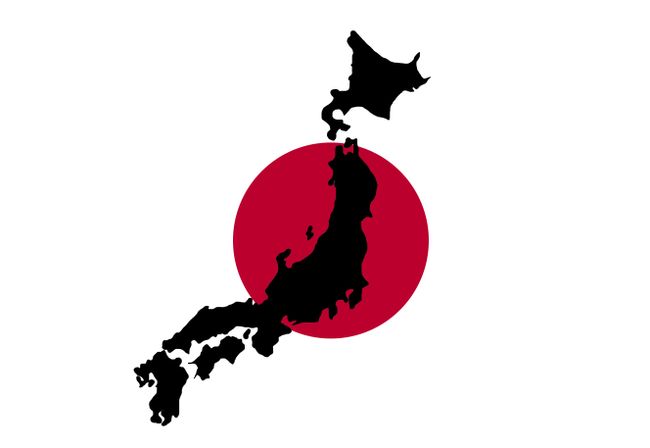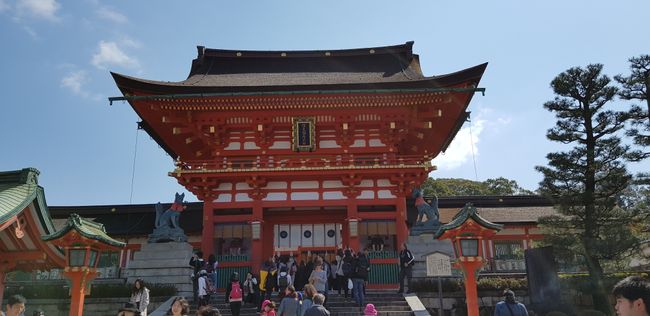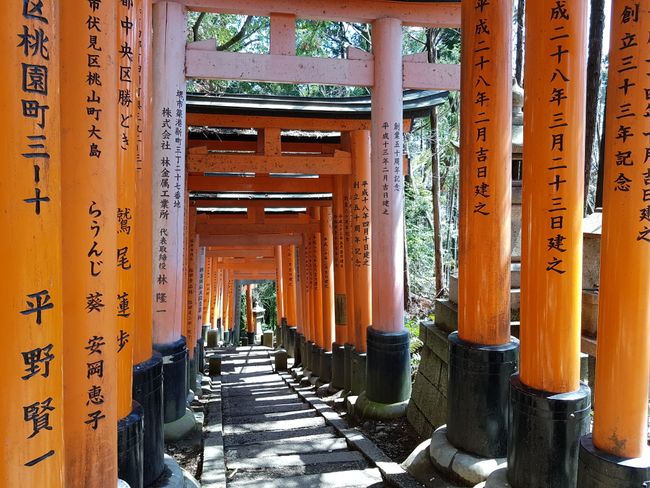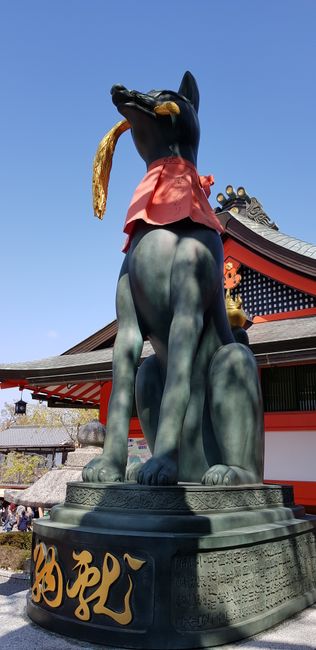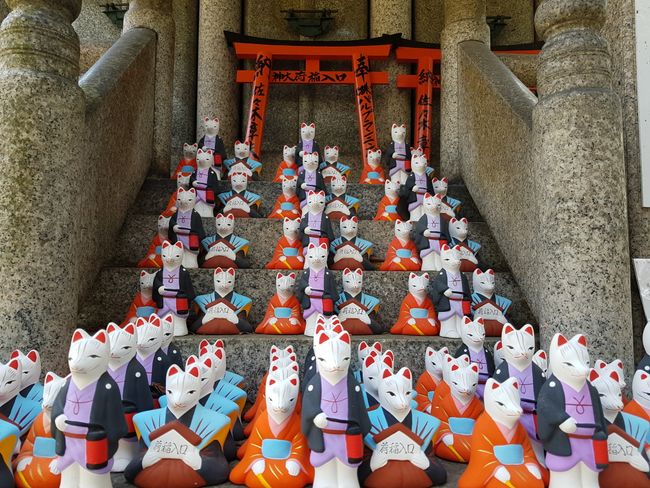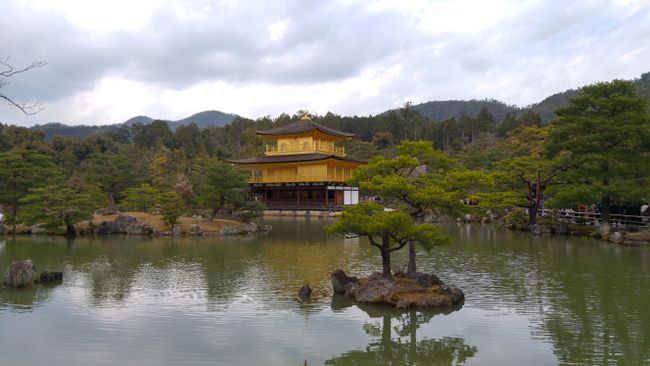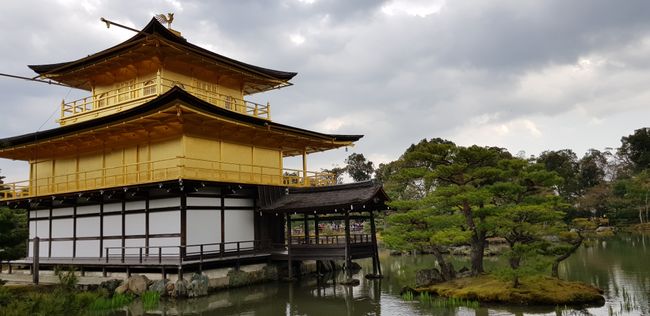Kyoto - From foxes to the Golden Pavilion - A journey through the city
Udgivet: 12.04.2019
Abonner på nyhedsbrev
The striking red gates of the Fushimi Inari Shrine are promoted as a major highlight in every guidebook, which is why this shrine is also very crowded. For this reason, the guidebook advises to be there early in the morning. The path to the shrine is said to include 5000 gates in total. There are also numerous cemeteries and small temples along this path.
The actual shrine, which is located at the beginning of the path, was originally dedicated to the gods of rice and sake. As agriculture became less important in Japan, new gods were worshipped to bring general business success (including in this shrine). It is interesting to note that the temple is guarded by fox statues. Why foxes specifically? Foxes are considered messengers of the grain god Inari. Some of the stone foxes have a key in their mouth, which is meant to symbolize the key to the granaries.
The shrine is located at the foot of Mount Inari, which we climbed in about an hour. The hike leads us through a beautiful bamboo forest up to the summit.
After numerous photo stops along the red torii gates, we made our way across the city to the northwest to the Kinkaku-ji Temple (Golden Pavilion). The Kinkaku-ji is one of the most visited sights in Kyoto, along with the Fushimi Inari Shrine. The temple is also called the Golden Temple and is surrounded by a beautiful garden. But it is particularly known for its upper floor, which is completely covered in gold leaf.
Originally, the building served a secular purpose. It was the residence of Shogun Ashikaga Yoshimitsu (1358-1409). Only after his death was the building converted into a Zen temple. Sadly, the temple was completely destroyed by a fire in 1950. A 21-year-old monk had set it on fire because he allegedly couldn't bear the beauty of the temple. It was rebuilt in 1955 and has been a UNESCO World Heritage site since 1994.
Abonner på nyhedsbrev
Svar

